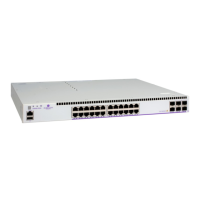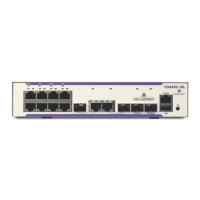Pseudowire Switching
Page 146 7210 SAS M Services Guide
forward over the secondary standby spoke SDP. In order to avoid black holing of in-flight packets
during the switching of the path, PE1 will accept packets received from PE2 on the primary
pseudowire while transmitting over the backup pseudowire.
When the SAP at PE2 is restored, PE2 updates the new status of the SAP by sending a new label
mapping message for the same pseudowire FEC or by sending pseudowire status notification
message indicating that the SAP is back up. PE1 then starts a timer and reverts back to the primary
at the expiry of the timer. By default, the timer is set to 0, which means PE1 reverts immediately. A
special value of the timer (infinity) will mean that PE1 should never revert back to the primary
pseudowire.
The behavior of the pseudowire redundancy feature is the same if PE1 detects or is notified of a
network failure that brought the spoke SDP operational status to DOWN. The following are the
events which will cause PE1 to trigger a switchover to the secondary standby pseudowire:
1. T-LDP peer (remote PE) node withdrew the pseudowire label.
2. T-LDP peer signaled a FEC status indicating a pseudowire failure or a remote SAP failure.
3. T-LDP session to peer node times out.
4. SDP binding and VLL service went down as a result of network failure condition such as the
SDP to peer node going operationally down.
Alcatel-Lucent’s routers support the ability for a user-initiated manual switchover of the VLL path
to the primary or any of the secondary be supported to divert user traffic in case of a planned
outage such as in node upgrade procedures.
